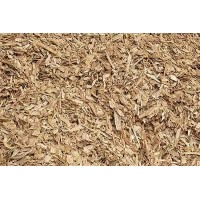How Long Does Playground Mulch Last

It would seem that more use would deteriorate the life of surfacing. In fact, more use can actually extend the life. Children playing in the play zone will naturally compact the surface, but they will also rotate it. Digging, jumping or other activities may rotate the moist underlay to the surface and allow it to dry. Moisture is one of the biggest causes of decomposition.
With moisture one of the largest causes of decomposition, temperature plays a big factor in the amount of moisture. Cool, damp areas from overhead shade may not dry out properly and will cause lower depths to decompose or compost. Hot, dry spells in the summer with days on end of searing 100 degree days will help dry the area. This doesn’t mean dry days will completely dry the surfacing down to the ground level. If the underlying inches of surfacing remain moist, extreme heat on the surface could accelerate compost effects from heat. More water, standing water, long rainy seasons- all contribute to decomposition.The more water added, the more important drainage and rotation will become. Once a playground is installed, drainage is difficult to alter. Above ground and grade installations have a natural advantage to allow rain water to run off. Below ground installations or “pit” style playgrounds will naturally accumulate water if attention has not been given to this during the design. Playgrounds should always be installed with a grade or slope of less than 2 degrees for safety. One degree or less of slope to the grade will encourage or allow drainage. In pit installations, there must either be a drain facility or drain system. If the average grade of the area is below the grade of the drain area, the pit will simply not drain. Installation of drainage systems at this point is not cost effective. Frequent rotation is essential to allow maximum drainage and dry out of the lower inches of surfacing. Grade, slope and drainage are specialized issues that landscape designers, architects and drainage specialists have expertise and certifications for. Depending on the factors creating moisture and compaction to the playground, rotation may decelerate the decomposition and extend the life of the playground.
Consider the depth of the surfacing at a maximum of 12” installed. If the lower 2” of surfacing remains moist, 17% of the surfacing is in compost mode. Over a period of time, more surface is decomposed than valuable play surface remains. This is costly, but more importantly, a safety hazard to children at play. Using a long fork, tine or prong tool, pull back a sample of surfacing the height of the cushion. Examine the lower amounts. If it is moist, it will decompose more rapidly than when dry. In your periodic maintenance of the play area, schedule a manual aeration of the surfacing. A pitchfork placed in the surfacing and pulled back is a simple task but will take time to cover every square foot of the play zone. Frequently questions arise of how to prevent grass from growing in play surfacing. If there is an ample level of dry surfacing, it is hard to grow grass or weed. Train maintenance personnel to direct clippings away from play area when mowing grass, edging or “weed trimming.” Train personnel in the use of herbicides and pesticides. As a basic rule, they should never be used in a playground area. There are many non-toxic alternatives available. Read instruction labels for any materials that are utilized in the playground, or adjacent areas. Most labels have a section explaining use in areas utilized by children and pets. With these factors in mind, we can attempt to answer the question. Customers with well maintained play zones typically call us every 18-24 months. A full replenishment is usually not needed. Before replenishment, look at the condition of the surfacing.
Evaluate the life you achieved and consider factors that may have contributed to an early need for replenishment. Even though installed surfacing will compact, having a well knit base of material in good condition will lessen the amount needed for the next purchase. Topping off the playground in 2 years with 33% of the original volume added means the life expectancy of the surfacing for that scenario is approximately 6 years. It is hard to calculate an amount or rate without an original fill and subsequent replenishment. A 33% fill over 2 years average equates to a replenishment budget every year of approximate 1/6th of the total volume purchase. Less than optimum scenarios are often seen, such as replenishment needed of 25-33% after 1 year.
If you find yourself replenishing more often than this you should concentrate on the factors that are probably causing decomposition. Simply covering up a problem with replenishment may not be the best solution, either. If you think you have 12 inches of surfacing and the bottom 6 inches have decomposed to earth, the effectiveness of the impact attenuation is severely diminished. Many times the underlying reason for this question is a simple cost factor. How much it is going to cost to maintain my playground? Remember that professional inspections should be utilized to assist in your maintaining a safe playground. Budget for optimum safety, you can never be "too" safe!
COPYRIGHT 2010 DunRite PLAYGROUNDS
